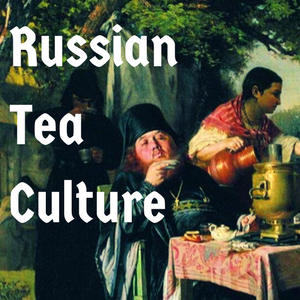
Tea is remarkably prominent in Russian culture. This is largely due to the fact that tea is hot, and Russia is cold. Thus, tea there, as it is consumed in most places in the world, is consumed hot. It was introduced to Russia in the mid-1600’s, but by the 1800’s, it was being imported in such large quantities that it became accessible to most Russians, rather than just the wealthy. Some tea has been grown in Russia, but it isn’t exactly a thriving industry, because Russia is, again, cold.
 Russian teas tend to be known for their smoky flavor. The flavor originally came from the long journey from China across what is now Mongolia. The journey took 16-18 months. During that time, the tea would be unloaded at night, because it was thought that the moisture improved the flavor. (It should be noted here that moisture does not improve the flavor of tea. It causes tea to rot. Please do not intentionally leave tea out and/or get it wet.) Regardless, this airing of the tea at night did change the flavor, because the smoke from the campfires would get into the tea. This no longer occurs naturally, because tea is no longer shipped by camel caravan, but newer blends have been created in order to mimic that lightly smoked flavor, usually by including Lapsang Souchong. Our Russian Country mixes together Lapsang and other full-bodied black teas to create a flavor similar to an 18th century Russian tea.
Russian teas tend to be known for their smoky flavor. The flavor originally came from the long journey from China across what is now Mongolia. The journey took 16-18 months. During that time, the tea would be unloaded at night, because it was thought that the moisture improved the flavor. (It should be noted here that moisture does not improve the flavor of tea. It causes tea to rot. Please do not intentionally leave tea out and/or get it wet.) Regardless, this airing of the tea at night did change the flavor, because the smoke from the campfires would get into the tea. This no longer occurs naturally, because tea is no longer shipped by camel caravan, but newer blends have been created in order to mimic that lightly smoked flavor, usually by including Lapsang Souchong. Our Russian Country mixes together Lapsang and other full-bodied black teas to create a flavor similar to an 18th century Russian tea.
 Russian tea is traditionally served out of a samovar, which has become a symbol of hospitality not unlike the Turkish mangal. A samovar both heats the water, and sometimes also includes an infuser for brewing your tea in it as well. The tea is traditionally brewed in a very concentrated form, and then served to guests along with hot water, so that they can adjust it to be as strong as they like. Sugar, honey, lemon, and jam can all be added to taste.
Russian tea is traditionally served out of a samovar, which has become a symbol of hospitality not unlike the Turkish mangal. A samovar both heats the water, and sometimes also includes an infuser for brewing your tea in it as well. The tea is traditionally brewed in a very concentrated form, and then served to guests along with hot water, so that they can adjust it to be as strong as they like. Sugar, honey, lemon, and jam can all be added to taste.
You may be familiar with “Russian tea” which is not smoky, but which is instead flavored with orange zest, cinnamon, and clove. This Russian tea is actually not Russian at all, but was first mentioned in 1925 in an American cookbook. However, our Hot Cinnamon Spice, which is also flavored with orange zest, cinnamon, and clove, should hit the spot if you’re feeling a bit nostalgic for it.
Чайку-с?
(some tea?)